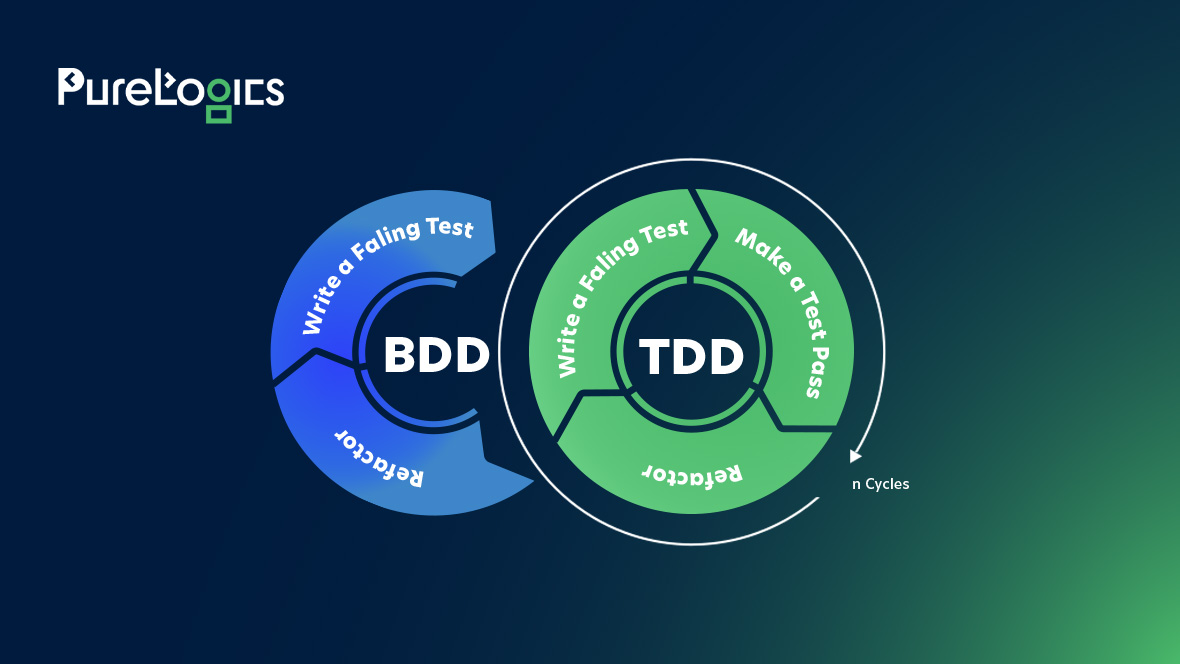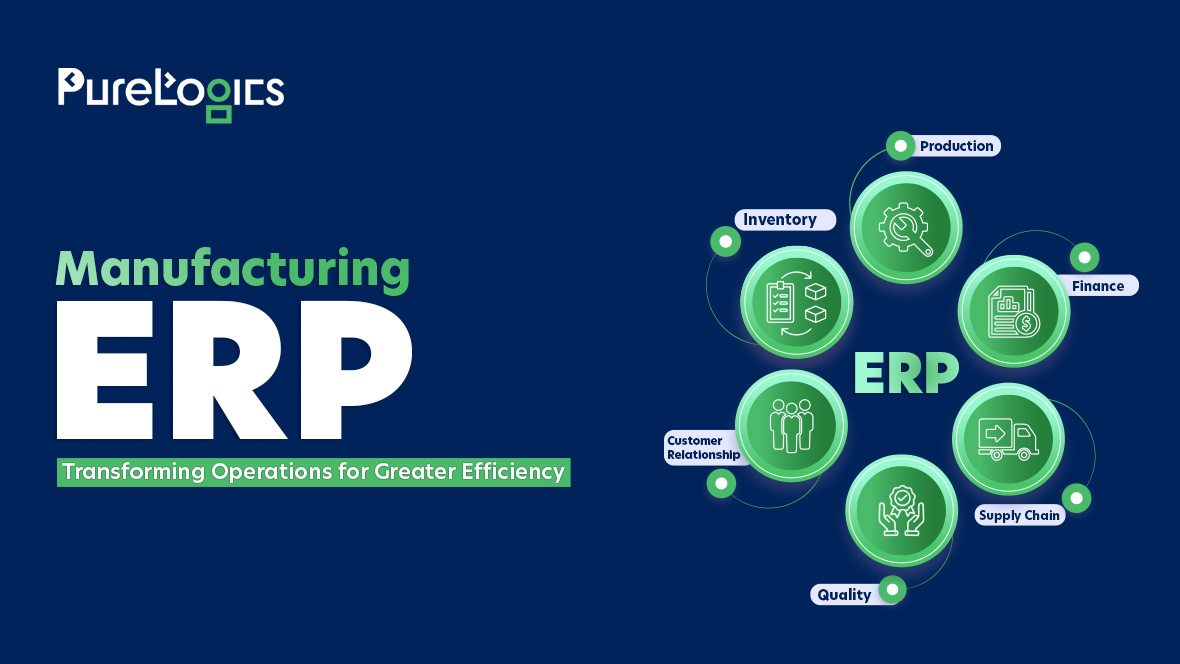If you are involved in software development, you have likely come across TDD and BDD. These testing methodologies play a crucial role in ensuring software quality, but they serve different purposes and follow unique workflows. While they may seem similar, their approach to collaboration, test creation, and execution varies significantly.
In this blog post, we will break down TDD vs BDD, highlighting their differences, advantages, and when to use each, so you can choose the best fit for your development process.
What is Test-Driven Development (TDD)?
Test-Driven Development (TDD) is a software development technique where tests are written before the actual code. This approach ensures that code is developed to pass predefined tests, promoting correctness from the outset. The TDD cycle typically involves writing a test, running it to see it fail, writing code to pass the test, and then refactoring the code for optimization.
Benefits of TDD
Let’s have a quick look at the benefits of TDD.
Improved Code Quality: By writing tests first, developers are compelled to consider the desired functionality, leading to cleaner and more purposeful code.
Early Bug Detection: TDD facilitates the identification of defects at an early stage, reducing the cost and effort required for fixes.
Simplified Refactoring: With a comprehensive suite of tests, developers can refactor code confidently, knowing that any deviations will be promptly detected.
Enhanced Documentation: Tests serve as live documentation, providing insights into the code’s functionality and expected behavior.
Increased Developer Confidence: A robust test suite instills confidence in developers, ensuring that new changes do not introduce unforeseen issues.
How to Perform TDD
The TDD process follows a structured approach, often referred to as the Red-Green-Refactor cycle:
| Step | Description |
| 1. Add a Test | Define a new test for the desired functionality |
| 2. Run the Test | Execute the test to confirm it fails, ensuring the test is valid |
| 3. Write Code | Develop the minimal code necessary to pass the test |
| 4. Run Tests | Re-run all tests to verify the new code passes and doesn’t break existing functionality |
| 5. Refactor Code | Optimize the code for efficiency and readability without altering its behavior |
| 6. Repeat | Continue the cycle for each new feature or requirement |
TDD Example
Consider developing a function that checks whether a number is prime:
Add a Test: Write a test to verify that the function returns true for prime numbers (e.g., 5) and false for non-prime numbers (e.g., 4).
Run the Test: Execute the test suite; the new test should fail since the function isn’t implemented yet.
Write Code: Implement the function to determine if a number is prime.
Run Tests: Re-run the tests to ensure the new function passes and doesn’t affect existing tests.
Refactor Code: Optimize the function for better performance or readability.
Repeat: Proceed to the next functionality, such as handling edge cases or larger inputs.
5 Popular TDD Frameworks
Now, let’s explore every TDD framework in detail, along with their pros and cons.
1. JUnit
JUnit is a widely-used testing framework for Java applications, providing annotations and assertions to facilitate test writing and execution. It integrates seamlessly with popular IDEs like IntelliJ IDEA and Eclipse, making it a preferred choice for enterprise-level Java projects.
With its powerful assertion capabilities, JUnit simplifies test creation and ensures robust software quality. Developers leverage JUnit for unit testing, continuous integration, and test automation.
| Pros | Cons |
| Mature and widely adopted | Verbose syntax |
| Extensive documentation | Limited support for parameterized tests compared to other frameworks |
| Integrates with various tools and IDEs |
2. NUnit
Designed for .NET languages, NUnit offers a rich set of features for writing and running tests, supporting data-driven testing and parallel execution. NUnit follows a similar structure to JUnit but provides enhanced capabilities for testing .NET applications.
With its user-friendly syntax and compatibility with Visual Studio, NUnit is a powerful tool for developers working in C# and other .NET languages.
| Pros | Cons |
| Rich feature set | Steeper learning curve for beginners |
| Supports multiple platforms | May require additional setup for certain features |
| Active community support |
3. RSpec
A testing tool for Ruby, RSpec allows developers to write human-readable specifications for their code, promoting behavior-driven development. It follows a declarative style, making it easy to understand for non-developers.
RSpec’s intuitive syntax, combined with its powerful mocking and stubbing capabilities, makes it the go-to framework for Ruby on Rails applications and other Ruby-based projects.
| Pros | Cons |
| Encourages readable specifications | Can be slower for large test suites |
| Flexible and customizable | Requires familiarity with Ruby syntax and conventions |
| Supports BDD practices |
4. pytest
A robust testing framework for Python, pytest supports fixtures, parameterized testing, and a variety of plugins to extend its functionality. Unlike the built-in unittest module, pytest allows developers to write more concise and readable tests.
It is widely used in Python projects, from web development to data science applications, due to its rich feature set and easy integration with CI/CD pipelines.
| Pros | Cons |
| Simple syntax | May have compatibility issues with older Python versions |
| Supports fixtures and parameterized testing | Some plugins may lack documentation |
| Extensive plugin ecosystem |
5. Mocha
A JavaScript test framework running on Node.js, Mocha offers a flexible structure for asynchronous testing, with support for various assertion libraries. Mocha’s ability to run tests serially makes it a great choice for developers looking to maintain clean and well-structured test cases.
This framework is frequently used for testing both frontend and backend JavaScript applications, ensuring high-quality web development.
| Pros | Cons |
| Supports asynchronous testing | Requires additional libraries for assertions and mocking |
| Flexible and extensible | Callback-based syntax can be complex |
| Works well with various assertion libraries |
What is Behavioral-Driven Development (BDD)?
Behavioral-Driven Development (BDD) is a software development approach that enhances Test-Driven Development (TDD) by incorporating natural language descriptions of test cases. BDD focuses on the expected behavior of an application rather than its implementation details. It encourages collaboration between developers, testers, and business stakeholders by using a domain-specific language (DSL) that is easily understood by all parties.
While TDD focuses primarily on writing unit tests before writing the code, BDD takes it a step further by ensuring that tests are written in a business-readable format. This makes BDD more accessible to non-technical stakeholders and aligns the development process with business goals. Unlike TDD, which primarily uses low-level unit tests, BDD incorporates high-level acceptance criteria defined in structured formats like Gherkin.
Benefits of BDD
Improved Collaboration: BDD fosters better communication among developers, testers, and business analysts by using a shared language to define test scenarios. This ensures that the entire team is aligned with the business requirements.
Better Requirements Understanding: Since BDD emphasizes defining behaviors upfront, it reduces misunderstandings and ambiguities in requirements, leading to a clearer development roadmap.
Enhanced Test Coverage: BDD scenarios focus on user behavior, which ensures that all critical functionalities are tested. This results in comprehensive test coverage and fewer missed edge cases.
Living Documentation: The structured format of BDD tests serves as up-to-date documentation that evolves with the system. This makes it easier for new team members to understand the software’s functionality.
Reduced Rework: By ensuring that requirements are correctly understood and implemented from the beginning, BDD minimizes costly revisions and bug fixes later in the development cycle.
How to Perform BDD?
| Step | Description |
| 1. Define Feature | Identify a business requirement and document it in a Gherkin feature file using the “Given-When-Then” structure |
| 2. Write Scenarios | Create test scenarios in natural language to describe various use cases and expected outcomes |
| 3. Implement Step Definitions | Convert Gherkin scenarios into step definitions in a programming language using a BDD framework like Cucumber |
| 4. Develop the Code | Write the application code that fulfills the behavior specified in the scenarios |
| 5. Execute Tests | Run the automated BDD tests to validate that the application behaves as expected |
| 6. Refactor & Repeat | Refactor code based on test results and iterate until the feature is fully implemented and tested |
BDD Example
Consider developing an ATM withdrawal feature:
Define Feature: Document the functionality using Gherkin syntax.
Write Scenarios: Define expected behaviors in a structured format.
Implement Step Definitions: Translate scenarios into code.
Develop the Code: Implement the feature.
Run Tests & Refactor: Validate functionality and refine as needed.
Example
1. Define Feature
Feature: ATM Withdrawal
As a bank customer,
I want to withdraw money from an ATM,
So that I can have cash when needed.
2. Add a Scenario
Scenario: Successful withdrawal
Given I have $500 in my bank account
And my ATM card is valid
When I withdraw $200 from the ATM
Then my account balance should be $300
And I should receive $200 in cash
3. Run the Test: Execute the BDD test suite; it should fail initially since the feature isn’t implemented yet.
4. Write Code: Implement the function to handle ATM withdrawals.
5. Re-run Tests: Execute the test cases again to confirm they pass.
6. Refactor & Repeat: Optimize the code and add more scenarios for edge cases.
5 Popular BDD Frameworks
Behavior-Driven Development (BDD) helps teams build software with better collaboration between developers, testers, and business stakeholders. It focuses on writing test scenarios in plain language to ensure clarity. Below are five popular BDD frameworks, each with its pros and cons.
1. Cucumber
Cucumber is one of the most widely used BDD frameworks, supporting multiple programming languages like Java, JavaScript, and Python. It allows teams to write test cases in Gherkin, a simple, readable format that ensures clear communication between technical and non-technical members. It integrates well with automation tools like Selenium and Appium.
| Pros | Cons |
| Supports multiple languages | Slower execution due to extra layers |
| Enhances collaboration with plain-language scenarios | It can be complex for beginners |
| Integrates with various testing tools |
2. SpecFlow
SpecFlow is a BDD framework designed specifically for .NET applications. It enables teams to write executable specifications in Gherkin and integrates with tools like NUnit, MSTest, and xUnit. SpecFlow makes it easy to automate acceptance tests and improve collaboration in Agile teams.
| Pros | Cons |
| Best suited for .NET ecosystem | Limited support for non-.NET projects |
| Strong integration with Visual Studio | Extra configuration needed for smooth execution |
| Supports parallel execution for faster testing |
3. Behave
Behave is a popular BDD framework for Python, designed to write human-readable test cases. It follows the Gherkin syntax and works well for automating acceptance tests. Behave is lightweight and integrates easily with Python-based testing frameworks like pytest, making it an excellent choice for Python developers.
| Pros | Cons |
| Simple and easy to use for Python developers | Limited support for other programming languages |
| Works well with pytest and Selenium | Lacks extensive documentation compared to Cucumber |
| Readable syntax improves collaboration |
4. JBehave
JBehave is a Java-based BDD framework that helps teams create clear and structured test scenarios. It allows writing test cases in a narrative format, making them easier to understand. JBehave integrates well with testing tools like Selenium and JUnit, offering flexibility for Java projects.
| Pros | Cons |
| Perfect for Java-based projects | Requires more setup compared to other frameworks |
| Supports narrative-based test cases | It can be challenging for teams new to BDD |
| Works smoothly with Selenium and JUnit |
5. Gauge
Gauge, developed by ThoughtWorks, is a modern BDD framework that supports multiple languages, including Java, C#, and JavaScript. It allows writing test cases in a Markdown-style syntax, making it highly readable. Gauge is scalable and works well for large, complex automation projects.
| Pros | Cons |
| Supports multiple programming languages | Limited built-in reporting tools |
| Markdown-based syntax is easy to read | Needs plugins for full functionality |
| Scalable for large test automation suites |
How Does BDD Enhance TDD?
Bridges Technical & Business Gap
BDD scenarios are written in natural language, making it easier for business analysts and product owners to participate in testing. (Example: A non-technical manager can review test cases before implementation.)
Aligns Tests with Requirements
BDD ensures that tests focus on expected behavior rather than internal code logic. (Example: In a shopping cart feature, BDD verifies that items remain in the cart after logging out and back in.)
Improves Test Coverage
BDD covers real-world use cases that unit tests might overlook. (Example: Validating that an online booking system prevents double bookings.)
Enhances Readability & Maintenance
BDD tests serve as living documentation, making them easier to understand and update. (Example: New developers can read BDD test cases to quickly grasp how a feature works.)
Detects Bugs Early
Defining behaviors before writing code helps identify inconsistencies early. (Example: In an airline booking system, BDD ensures seat availability is checked before confirming payment.)
A Quick Recap: TDD vs. BDD
| Aspect | TDD | BDD |
| Definition | Focuses on writing tests before writing the actual code | Focuses on defining application behavior using plain language |
| Approach | Developer-centric, as tests are written at the code level | Business and user-centric, as tests are written based on expected behavior |
| Test Format | Uses unit tests, often written in a programming language | Uses feature files written in human-readable Gherkin syntax |
| Collaboration | Primarily involves developers | Involves developers, testers, and business stakeholders |
| Language Used | Uses programming languages like Java, Python, or C# | Uses structured natural language (Gherkin) |
| Test Scope | Focuses on low-level unit tests | Focuses on high-level acceptance tests |
| Tools | Common tools include JUnit, NUnit, and pytest | Common tools include Cucumber, SpecFlow, and Behave |
| Test Examples | Tests focus on code functionality (e.g., checking if a function returns the correct result) | Tests focus on user behavior (e.g., ensuring a user can log in successfully) |
| Documentation | Less readable for non-technical stakeholders | Serves as live documentation for all team members |
| Development Speed | Faster execution, but may not capture all user expectations | Slightly slower due to extensive test writing, but ensures better alignment with business goals |
When to Use TDD?
- If your project requires rigorous unit testing to catch bugs early
- When working in small, isolated code units that need thorough testing
- If your development team is experienced with automated testing
When to Use BDD?
- If you need clear communication between technical and non-technical team members
- When testing the overall functionality and user behavior of the application
- If you are following an Agile methodology and need collaborative test scenarios
Looking for expert guidance in software development and automation? Our team at PureLogics specializes in TDD, BDD, and test automation to deliver high-quality, bug-free software. Fill out the form to book your free 30-minute consultation.


 [tta_listen_btn]
[tta_listen_btn]
 July 31 2025
July 31 2025






